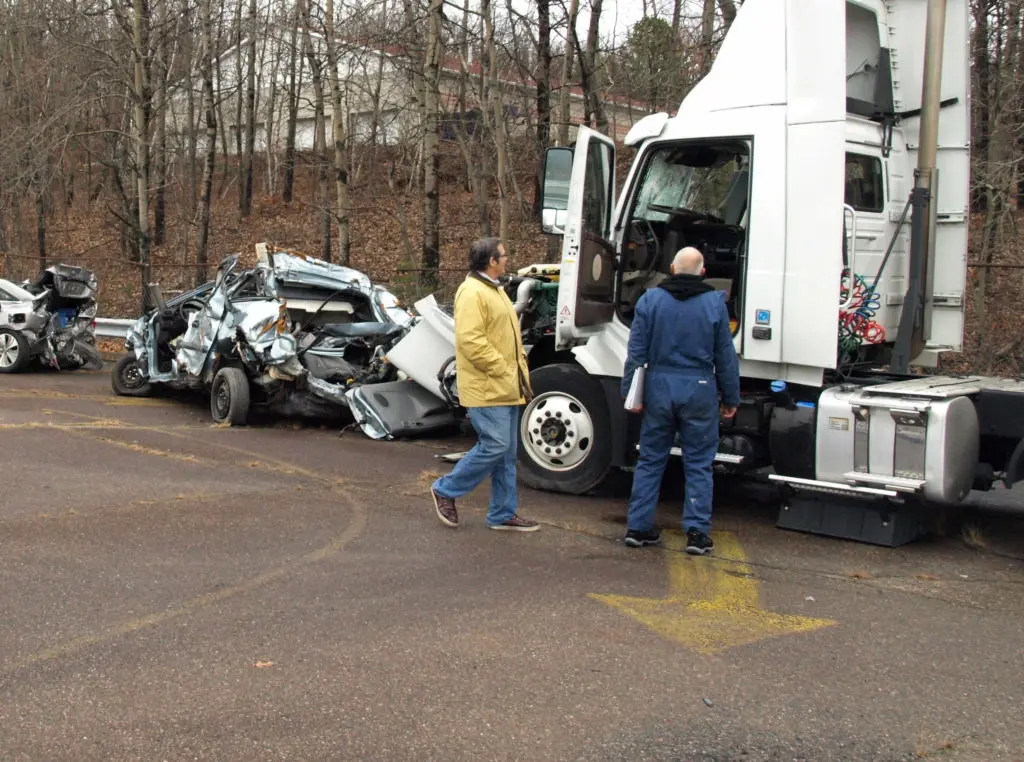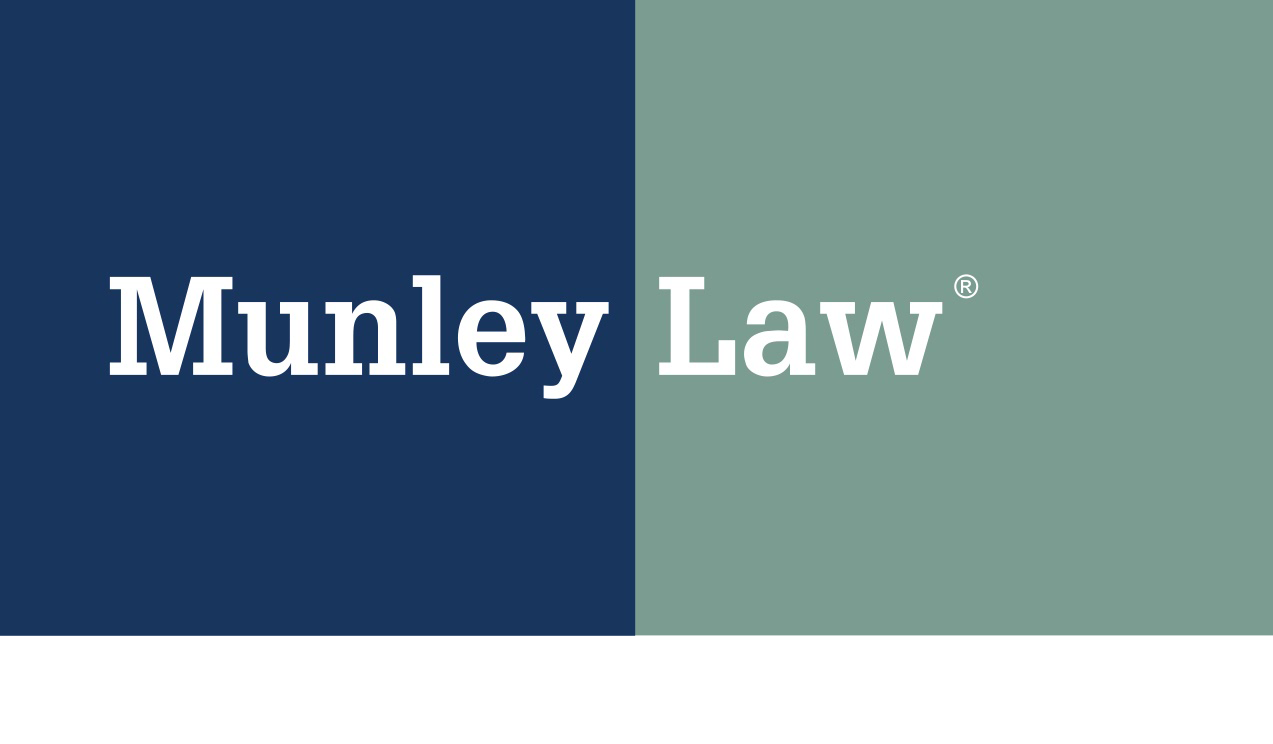What to Do When Hazardous Materials Spill During a Truck Crash
What to do if you have been in a truck crash with chemical spills or hazardous materials
Tanker trucks transport the majority of U.S. shipments: they haul gasoline, diesel, specialty chemicals, food grade and dry bulk on a daily basis. With the increasing transportation of goods, the number of tanker truck accidents on our roads has also been on the rise. Tankers frequently haul hazardous and highly flammable materials, and a crash with these large, precarious vehicles could mean enduring serious burns, smoke inhalation injuries, or even death. Road surfaces can become extremely unsafe, air quality can be compromised, and fires and explosions can result from sudden hazardous waste disturbances.
If you or a loved one have been in a truck crash involving a hazardous materials spill, there may be multiple responsible parties, and the crash may require in-depth investigations. You will need a truck accident lawyer with a reputation, experience, and successful track record to get you all of the compensation you deserve. Contact our award-winning team at Munley Law to start the claims process to get you compensation for your injuries.

What is Considered a Hazardous Chemical Spill?
A hazardous spill occurs when large amounts of hazardous materials are released or when they can no longer be controlled in a safe manner. The Federal Highway Administration (FHWA) describes a hazardous materials cargo spill as “a release of substance or material capable of posing an unreasonable risk to health safety, or property when transported for commercial purposes.”
“HAZMAT” is an abbreviation for hazardous materials and is often used when referring to trucks and tankers transporting hazardous materials. Depending on the substance and how it behaves when its environment is suddenly impacted, when it is airborne, or when it sustains heat, will determine the harm it possesses, when exposed to its potential victims. Hazardous material truck accidents can leave victims vulnerable and there are many types of injuries that can be sustained.
The Federal Motor Carrier Safety Association (FMCSA)’s mission is to govern and motivate safe roads and transport; there are specific guidelines and procedures to follow, to ensure safe transport. FMCSA recognizes 9 classes of hazardous materials, and the Department of Transportation (DOT) has the general jurisdiction to regulate hazardous materials in transport, discriminating which chemicals to regard as hazardous, subdividing them based on their characteristics:
- Class 1: Explosives
- Class 2: Gases
- Class 3: Flammable liquid and combustible liquid
- Class 4: Flammable solid, spontaneously combustible, and dangerous when wet
- Class 5: Oxidizer and organic peroxide
- Class 6: Poison (toxic) and poison inhalation hazard
- Class 7: Radioactive
- Class 8: Corrosives
- Class 9: Miscellaneous
Hazardous materials are defined and regulated by the U.S. Environmental Protection Agency (EPA), U.S. Occupational Safety and Health Administration (OSHA), U.S. Department of Transportation (DOT), and U.S. Nuclear Regulatory Commission (NRC). The safe, secure, and efficient delivery of hazardous material to industry and consumers by all transport modes is governed by the Pipeline and Hazardous Materials Safety Administration (PHMSA). HAZMAT regulations apply to any persons that:
- Transport hazardous materials in commerce
- Offer hazardous materials for interstate, foreign, and intrastate transportation in commerce
- Design, manufacture, fabricate, inspect, mark, maintain, recondition, repair, or test a package, container, or packaging component that is represented, marked, certified, or sold as qualified for use in transporting hazardous materials in commerce
- Prepare or accept hazardous materials for transportation in commerce
- Are responsible for the safety of transporting hazardous materials in commerce
- Certify compliance with any requirement under the Federal hazmat law
- Misrepresent whether he or she is engaged in any activity listed above
Furthermore, PHMSA’s regulatory role includes:
- Issuing rules and regulations governing the safe transportation of hazardous materials
- Issuing, renewing, modifying, and terminating special permits;
- Issuing, modifying, and terminating approvals for specific activities
- Receiving, reviewing, and maintaining important records, such as incident reports
- Making (or issuing) administrative determinations whether State, local, or Indian tribe requirements are preempted by the Federal HAZMAT law, or may remain in effect, under a waiver of preemption.
Is There a Training Requirement for HAZMAT Truck Drivers?
Hazardous material transport drivers must have a commercial driver’s license (CDL) with a hazardous materials endorsement prior to driving vehicles carrying hazardous materials. The Pennsylvania Department of Transportation (PennDOT) regulations require that HAZMAT drivers successfully complete the regulations and requirements written test and the Federal Security Threat Assessment training, which includes processes about how to manage hazardous materials, and what to do should they be involved in an accident, including mandatory, timely, incidence reporting.
FMSCA enforces PennDOT’s guidelines by regulating “highway hazardous materials routes, the hazardous materials endorsement for a commercial driver’s license, highway hazardous material safety permits, and financial responsibility requirements for motor carriers of hazardous materials (FHL, 2021).” Violations can result in penalty assessments and, ultimately, civil and criminal penalties.

What Do I Do If I Was Involved in a Truck Crash Involving a Chemical Spill?
Being involved in a truck accident is nerve-racking enough: you can experience physical injuries or even lose your life. Injuries, medical bills, loss of work, assisted care, lifestyle changes — the list is long; the onset of the physical and mental trauma is real and can be overwhelming. If the truck or tanker is a hazardous waste transporter, matters are more complex. The environment of a hazardous truck accident makes the truck driver and all parties involved vulnerable in multiple ways:
- The impact of the truck crash may create physical and non-physical damages
- Roads surfaces may be compromised and unsafe
- Air may become unsafe due to toxic releases
- Fire may result, leading to an explosion, burns, and potential death
- Toxic environmental exposure can manifest in a delayed manner: consequences from toxic exposure may not be immediately recognizable
Sharing the roads with commercial vehicles can be intimidating, and a hazardous spill is unpredictable on many levels. Knowing the steps that you can take to protect truck accident victims can help you preserve your health and well-being, should you ever be involved in a truck crash and accident spill:
- Evacuate as best you can – If you are able to, steer clear of the hazardous spill. Should there be access to HAZMAT protective gear (gas masks or suits that the truck driver possesses), the situation may warrant that you and other potential victims use them.
- Contact authorities and emergency services – Contact 911 and report the accident. Disclose any details that can be helpful, such as people in need of medical aid, and hazardous waste that you and others may be exposed to. When emergency services arrive, be brief and do not admit any fault whatsoever. Get the badge number and name of the officer for follow-up and to obtain the complete police report.
- Seek medical aid – Seek medical assistance for yourself or anyone else who may be injured. Chemical spills do not always show their impact, so be certain that you seek care. After you have followed the next steps (should you be able to physically do so) be certain to go to the hospital to learn about your injuries and/or exposures. If you choose to not go to the hospital from the scene of the accident, make sure to follow up with your primary physician. Injuries, even serious injuries, can be internal and may not be evident until several days after the onset of the truck crash.
- Document and obtain evidence – Take photos and videos of the crash site, surrounding area, and injuries if possible. If you do eventually go to the hospital, take photos of your injury(or injuries).
- Exchange information with others involved and witnesses – Obtain contact information of the driver, who the driver may be working for, and any potential witnesses.
- Contact your insurance company – Contact your own insurance provider and inform them of the accident.
- Do not talk to truck company representatives and insurance agents (and do not sign anything!) – Protect yourself by only talking to the police, emergency services, medical personnel, your insurance provider, and, ideally, a truck accident lawyer. Information such as phone numbers, etc. may be exchanged; refrain from conversing about the accident with anyone else, as this can impact any compensation you desire to receive. And remember no fault is mentioned in ANY of your exchanges.
- Remain at the crash accident until police instruct that it is ok to leave – You need to complete your accident scene statement with the police. Depending on your exposure and what chemicals may come into play, medical treatment may be needed, quarantine due to exposure and contamination, and extended care.
What Compensation is Available for Victims of a Chemical Spill Truck Accident?
When determining compensation for your HAZMAT truck accident case, both your current and your future expenses will be taken into account. A truck accident victim can receive two types of damages — economic and non-economic:
- Economic damages will cover any financial costs that accrued after the accident. This includes but is not limited to, current and future medical expenses, lost wages, loss of earning capacity, and funeral costs.
- Non-economic damages are meant to compensate you and your family who are struggling after the accident, such as any pain or suffering you’re experiencing, mental anguish, and loss of consortium.
Insurance rarely covers all of the losses and expenses that result from a trucking case. Trucking, hauling, and leasing companies often seek to minimize payments by disputing victims’ insurance claims. Trucking firms and insurance companies often use tactics that can add to the trauma and expense of being in a commercial motor vehicle crash.
Munley Law’s truck accident attorneys have won billions of dollars in settlements and verdicts, including many multimillion-dollar awards. We believe that cost should never stand in the way of justice. That’s why we never collect a fee for our legal services unless we win your case. As our client, you will not pay anything out of your own pocket or any upfront costs. And, our contingent fee (a portion of the settlement or verdict) will never exceed the amount paid to you. If we are unable to get you the compensation you need for your personal injury lawsuit, you owe us nothing. That’s our no-fee promise.
If you have been involved in a hazardous material truck crash, contact us and let us help you navigate and get you the care and compensation that you are entitled to. Contact Munley Law today to schedule a free consultation. We are available 24/7 to take your call.









